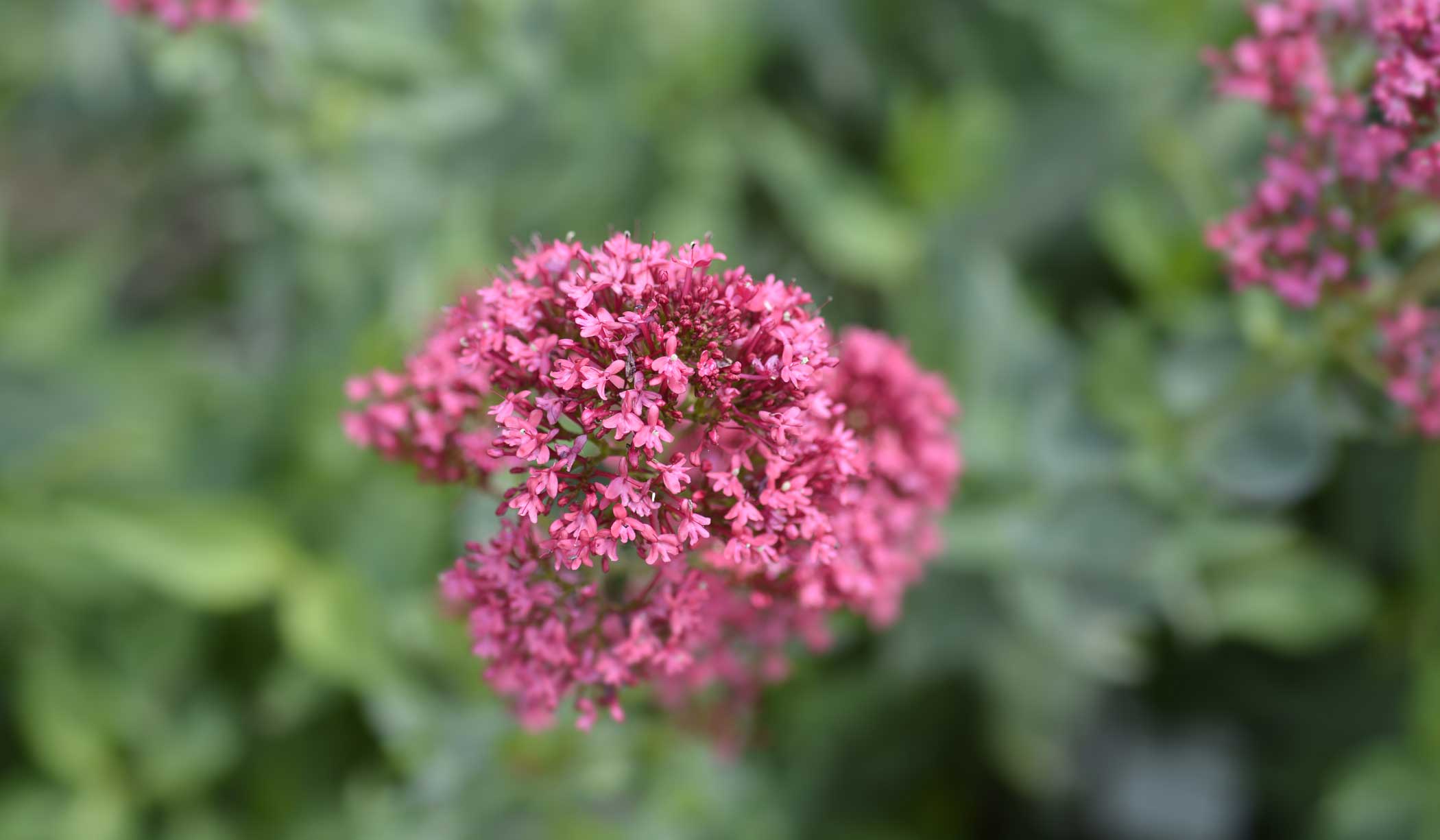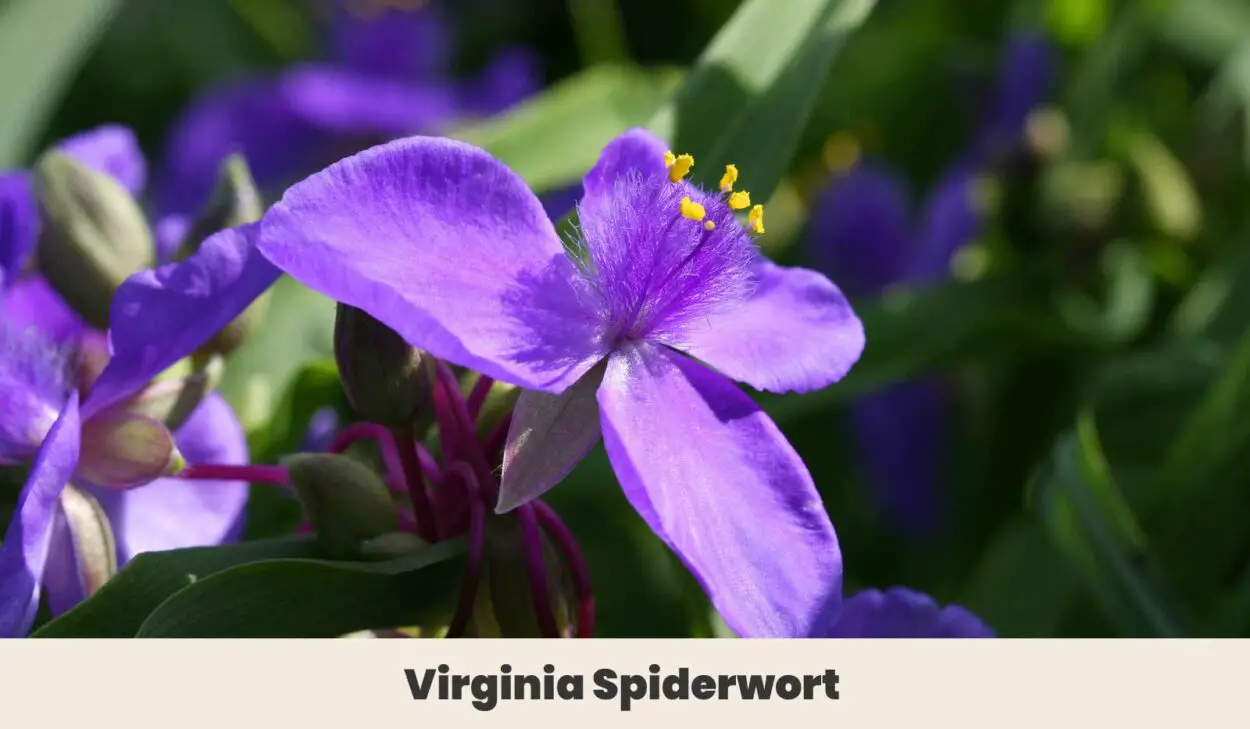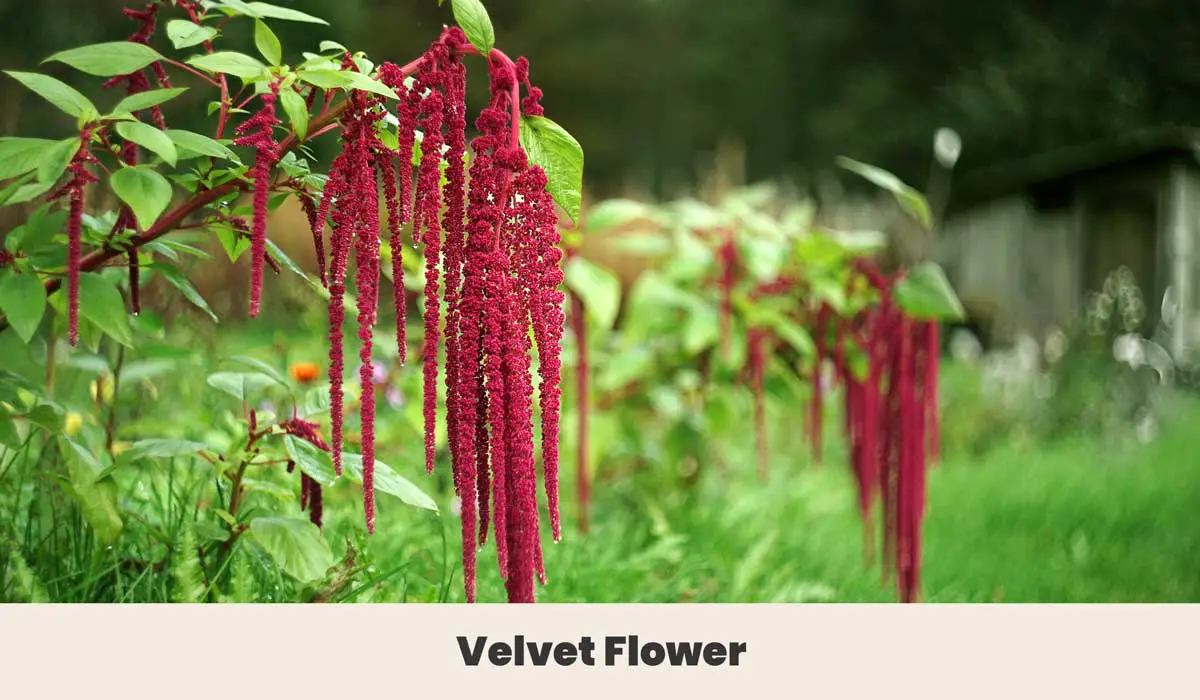12 Flowers That Start with Letter V (From Verbena to Valerian)

This post follows our research editorial guidelines.

Vibrant, voluptuous flowers and verdant foliage are vital to even the most endearing of gardens. Vegetation vibrating with vitality and vigor brings value to valleys and villas alike. No need to be vague or vapid – each bloom is valuable to your garden design and function.

I’m voyaging through all my favorite flowers letter by letter, and I’ve reached the letter ‘V’.
Quickly Find Flowers That Start With V
1. Verbena (Glandularia Canadensis)

Also known as Rose Vervain, this native Verbena is a beautiful wildflower that produces playful clusters of star-shaped purple flowers. It’s an excellent choice for rock gardens and borders, as it will happily put down root anywhere a stem touches the soil. They’re also excellent for pollinator gardens due to their late blooming and abundant flowers.
| Botanical Name: | Glandularia Canadensis |
| Growth Rate: | Fast |
| Native Range: | United States |
| Hardiness Zones: | 5 to 9 |
| Soil Needs: | All types when adequate drainage is provided. |
| Exposure: | Full sun to partial shade |
| Blooming Period: | Spring to fall |
2. Viburnum (Viburnum suspensum)

Viburnum is a dense shrub-like tree with white flowers from the southwestern islands of Japan. It forms fantastic, fragrant hedges, scattered with small groups of pure white petals. They can reach up to twelve feet tall if left to their own devices, so prune each spring to keep them in check.
| Botanical Name: | Viburnum suspensum |
| Growth Rate: | Fast |
| Native Range: | Southwestern Japan |
| Hardiness Zones: | 8a to 11b |
| Soil Needs: | Slightly acidic, moist, but well-drained soil |
| Exposure: | Full sun to partial shade |
| Blooming Period: | Late winter to spring |
3. Virginia Bluebells (Mertensia virginica)

The Virginia Bluebell grows quickly but dies back just as fast, spending much of their lives in a dormant state. When they do appear, they produce delicate pale blue flowers that hang like bells, as the name suggests. They make an excellent under-story plant and grow well with shallow-rooted annuals.
| Botanical Name: | Mertensia virginica |
| Growth Rate: | Fast |
| Native Range: | United States and Southern Canada |
| Hardiness Zones: | 5 to 8 |
| Soil Needs: | Organically rich, moist soil |
| Exposure: | Partial to full shade. |
| Blooming Period: | Spring to early summer |
4. Virgin’s Bower (Clematis virginiana)

Virgin’s Bower is a vigorous flowering vine that will grow well in shade or full sun. Its white star-shaped blooms are much beloved by bees, butterflies, and other beneficial insects.
Plants are either male or female, females produce seed but male plants are far showier, producing larger and more abundant flowers.
| Botanical Name: | Clematis virginiana |
| Growth Rate: | Very fast |
| Native Range: | Central and Eastern United States, Southern Canada |
| Hardiness Zones: | 6a to 8b |
| Soil Needs: | Moist, organically rich soil. |
| Exposure: | Full sun to deep shade |
| Blooming Period: | Fall |
5. Viper’s Bugloss (Echium vulgare)

Viper’s Bugloss is a type of borage, a purple flowering weedy shrub that takes two years to produce its long stalks of compact little blooms. The name Viper’s Bugloss comes from the shape of its seeds, which look something like the head of a viper. Presumably, this is why its roots were once used as a folk remedy to treat snake bites.
| Botanical Name: | Echium vulgare |
| Growth Rate: | Fast |
| Native Range: | Europe and Asia |
| Hardiness Zones: | 4a to 8b |
| Soil Needs: | All types including disturbed or rocky soils |
| Exposure: | Full sun |
| Blooming Period: | Spring through fall |
6. Vetch (Vicia Sativa)

Vetch is a climbing vine that produces small pairs of purple double-lobed flowers, much like a sweet pea. Both are part of the bean family and can fix nitrogen in the soil. The young leaves are edible and popular food for any herbivorous browser looking for a snack. Vetch also made it to the top of my list of purple wildflowers.
| Botanical Name: | Vicia Sativa |
| Growth Rate: | Fast |
| Native Range: | North Africa, Western Asia and Europe |
| Hardiness Zones: | 2a to 10b |
| Soil Needs: | Loamy, sandy soils |
| Exposure: | Full sun to partial shade |
| Blooming Period: | Spring |
7. Virginia Spiderwort (Tradescantia virginiana)

Virginia spiderwort is a lively creeping plant with sweet triangular flowers in a bright, rich purple. Like most spiderworts, it loves cool conditions and damp gardens, so it’s a good choice for rain gardens, ponds, or in other wet areas of the garden.
| Botanical Name: | Tradescantia virginiana |
| Growth Rate: | Moderate |
| Native Range: | Eastern and Central United States |
| Hardiness Zones: | 4a to 9b |
| Soil Needs: | Prefers organically rich soil but tolerates most soils |
| Exposure: | Full sun to full shade |
| Blooming Period: | Spring to early fall |
8. Violet Wood Sorrel (Oxalis violacea)

Violet wood sorrel is a dainty pink bloomer that grows like a weed with broad, tall stemmed leaves. It typically reaches half a foot high, with its little mauve flowers growing slightly taller. The leaves of the plant are edible, though don’t overdo it. Too much can cause kidney issues due to the presence of oxalate crystals in the leaves.
| Botanical Name: | Oxalis violacea |
| Growth Rate: | Fast |
| Native Range: | United States |
| Hardiness Zones: | 5 to 9 |
| Soil Needs: | Moist, well-draining soils |
| Exposure: | Full sun to partial shade |
| Blooming Period: | Spring |
9. Violet (Viola)

What we call violets are a family of almost 600 species that span the globe. It means that no matter your conditions, there’s a violet to suit your garden.
In fact, I’ve spotted wild violet pop up in all corners of my garden boundaries it starts off looking like a weed but given a chance will reward you with deep purple blooms. All species share similar, delicate flowers.
They’re an endearing deep purple, with the blooms held aloft above clusters of glossy deep green leaves.
| Botanical Name: | Viola spp. |
| Growth Rate: | Fast |
| Native Range: | Global |
| Hardiness Zones: | 1a to 10b |
| Soil Needs: | Organically rich, loamy soil |
| Exposure: | Full sun to partial shade |
| Blooming Period: | Spring |
10. Vanda Orchid (Vanda coerulea)

The striking Vanda Orchid is a vibrant addition to your indoor collection. They produce otherworldly blue flowers in bracts of four or five and are often cross-bred to add blue color to other orchid cultivars. They like cooler temperatures than most orchids, and while they will bloom better with bright light avoid direct sun.
| Botanical Name: | Vanda coerulea |
| Growth Rate: | Slow |
| Native Range: | Northeast India and Southern China |
| Hardiness Zones: | 10-11 |
| Soil Needs: | Epiphytic, do not plant in soil |
| Exposure: | Bright, indirect light |
| Blooming Period: | No fixed period; blooms 4 to 5 times a year in ideal conditions |
11. Velvet Flower (Amaranthus caudatus)

Also known as Love-lies-bleeding or tassel flower, the red velvet perennial flower produces astonishing draped scarlet flower displays that make me think of fox tails. They retain their color and beauty when dried, perfect for dry arrangements. However, it’s worth letting them go to seed, as the seeds are very nutritious and flavorful.
| Botanical Name: | Amaranthus caudatus |
| Growth Rate: | Fast |
| Native Range: | Peru |
| Hardiness Zones: | 2 to 11 |
| Soil Needs: | Tolerates most soils with good drainage |
| Exposure: | Full sun to partial shade |
| Blooming Period: | Summer to winter |
12. Valerian (Valeriana officinalis)

Valerian is a popular herb that produces dense sprays of tiny but powerfully fragrant white blooms. Pollinators love it, and so do herbalists. The root has been dried and used in medicines for centuries, most notably as a sleep aid
. Use it carefully, as it can cause liver problems if the dose is too high and it can interfere with other medication. It’s also invasive, so be as mindful planting as you are using it for a restful night’s sleep.
| Botanical Name: | Valeriana officinalis |
| Growth Rate: | Fast |
| Native Range: | Europe, Western Asia |
| Hardiness Zones: | 4 to 7 |
| Soil Needs: | Prefers rich, moist loam but will tolerate most soils |
| Exposure: | Full sun |
| Ease of Care: | Moderate |
Final thoughts
Let me raise my voice in voluble praise for each shrinking violet and vibrant vetch in the green veld of my garden. Their velvety folds and vigorous foliage are worthy of reverence, season to season.
